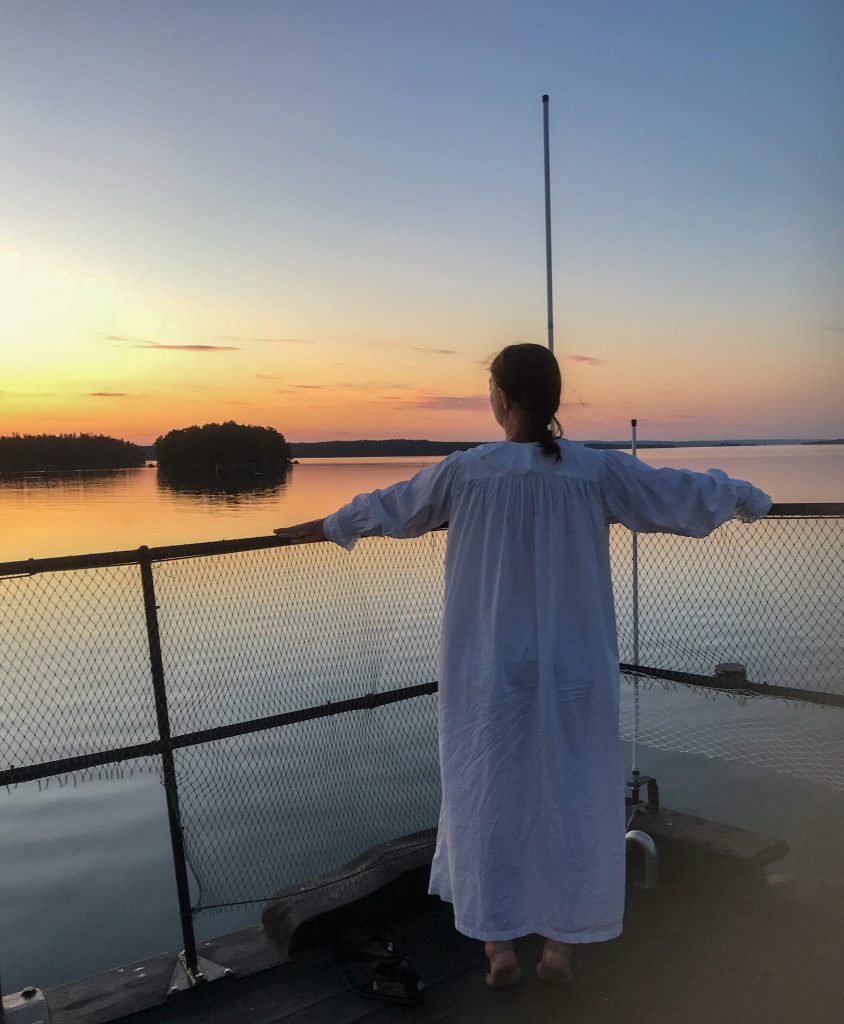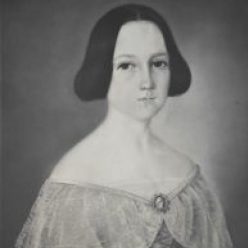 För exakt 5 år sedan opererades jag för bröstcancer. Det var så allt började. Funderingar på att man inte är odödlig. Att det gäller att ta vara på de dagar man har och göra något roligt och våga göra något man aldrig gjort förut.
För exakt 5 år sedan opererades jag för bröstcancer. Det var så allt började. Funderingar på att man inte är odödlig. Att det gäller att ta vara på de dagar man har och göra något roligt och våga göra något man aldrig gjort förut.
Om någon sagt till mig när jag låg där på uppvaket på St Göran med bandage och dränage och bara ett bröst kvar:
Kerstin, du kommer de närmaste 5 åren att sy 14 stycken 1800-talsklänningar, bahytter, underkjolar, parasoller och handväskor. Du kommer gå klädd i snörliv och lager av kläder bara för att ta reda på hur det känns. Du kommer resa runt i dessa 1800-talskläder genom Europa, hålla föredrag, gå på operor, vandra i bergen. Du kommer sova helt ensam på en ångbåt klädd i en antik nattskjorta (mycket snyggare än Landstingets!), resa med vackra ångbåtar och gamla tåg i Europa, åka häst och vagn i Virginia, du kommer simma runt i klänning, byxor och hatt. Allt tillsammans med din syster Sara.
Du kommer sitta och tolka handskrifter, tidningar med frakturstil, sitta med näsan i krigsarkivets husesynsprotokoll, du kommer även starta ett förlag och ge ut en bok.
Då skulle jag trott att de gett mig för mycket morfin.
Ibland är det bra att få den där sparken i baken så att man bryter upp och kommer iväg. Vi vågade ge oss ut på helt nya vägar där vi mötte alla fantastiska människor som berikat våra liv, både i Sverige och utomlands.
Vi har lärt oss så mycket under dessa 5 år. Det som från början var en kul ”grej” blev ett fördjupat intresse för kvinnohistoria, om 1800-talets kvinnors liv och villkor. Augustas efterlämnade dokument var nyckeln som öppnade dörren till en värld av kvinnoöden, från fattighjon och utblottade änkor till välbeställda adelsdamer klädda i siden. Gemensamt hade de att kämpa mot ofrihet, sjukdomar och för tidig död.
